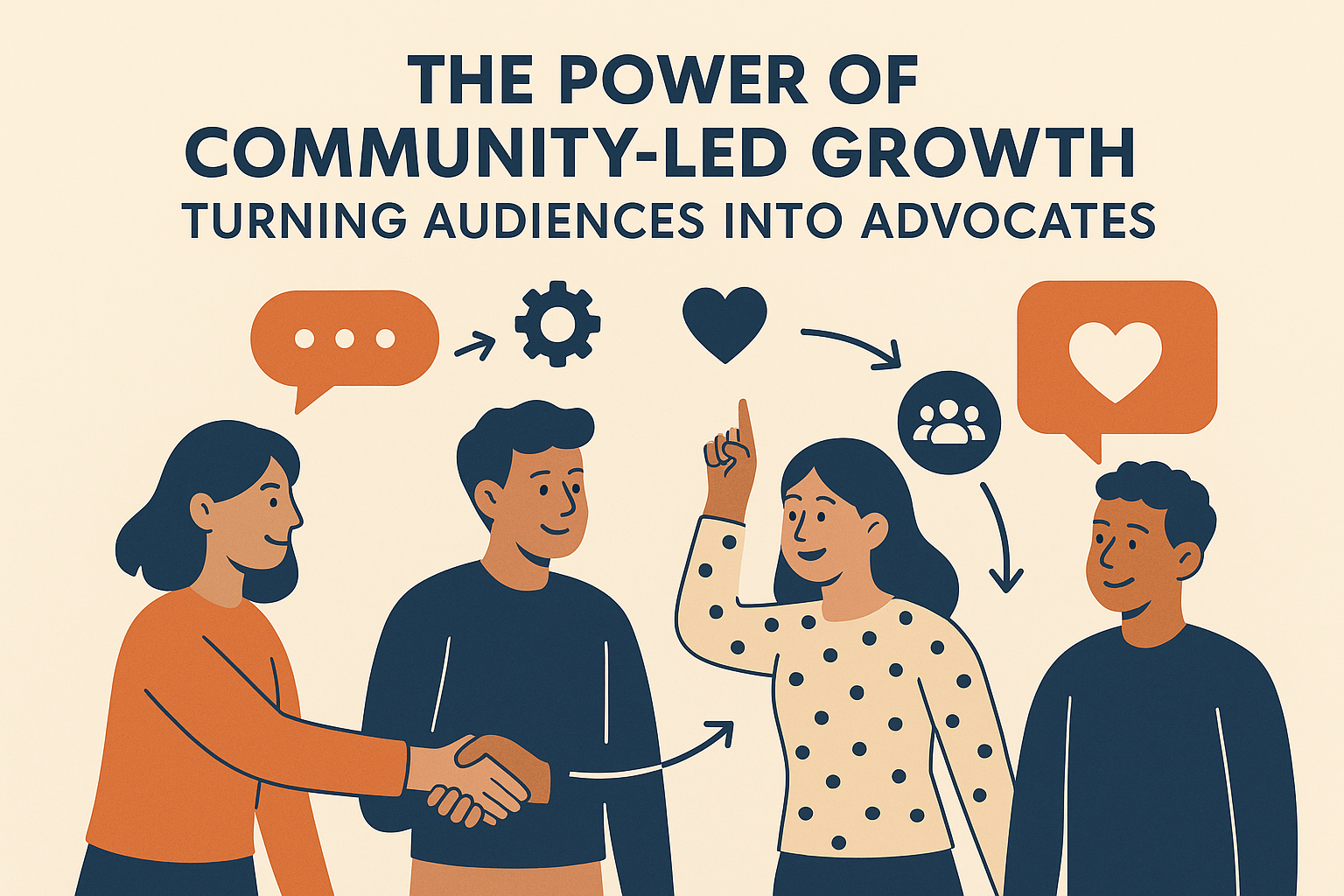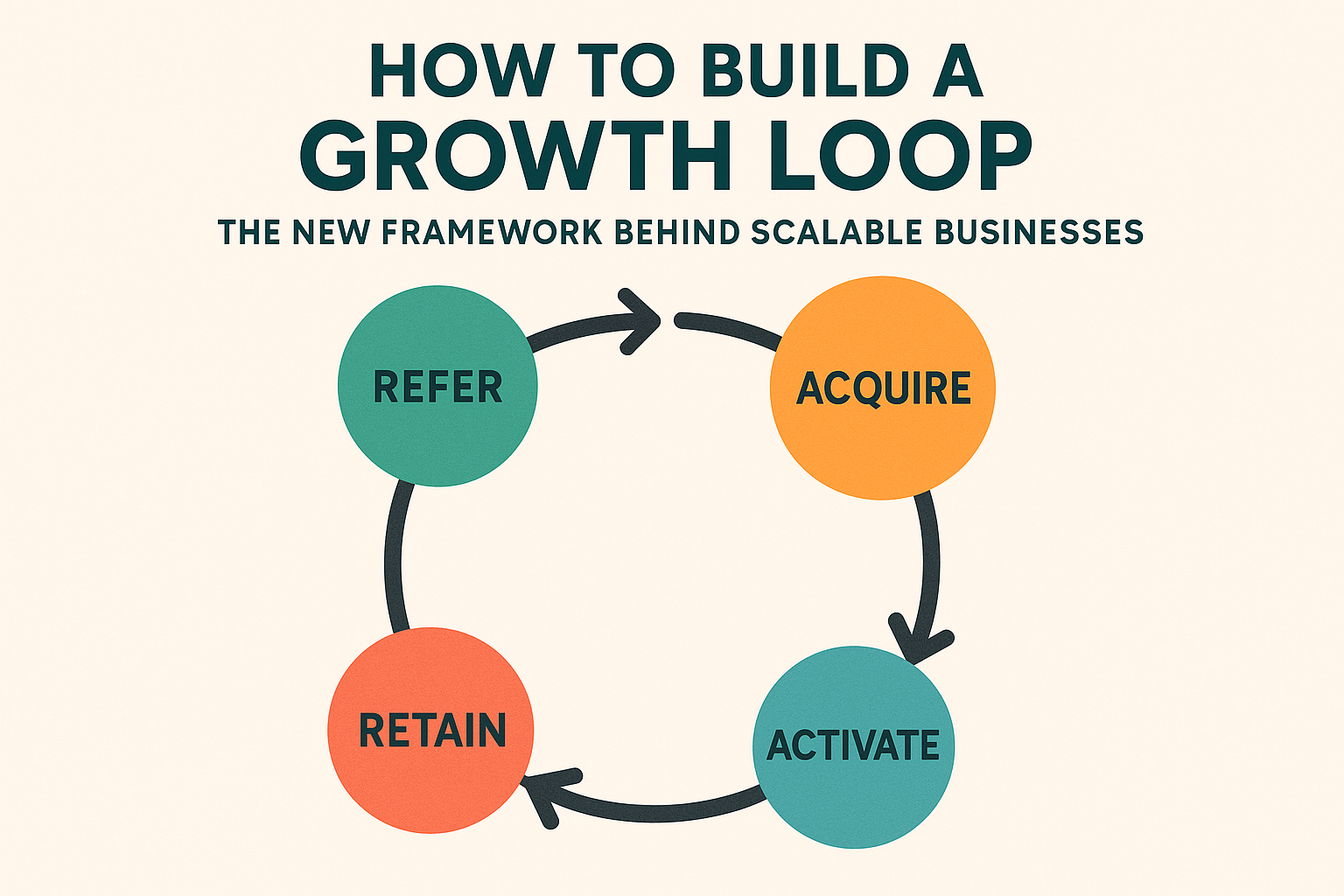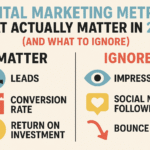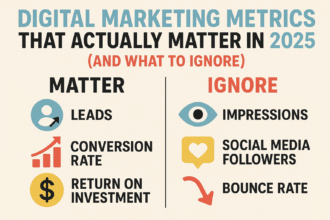The Paradigm Shift from Transactional to Tribal Growth
Imagine a growth strategy so powerful that your most passionate customers become your marketing, sales, and product innovation teams. This isn’t a futuristic fantasy—it’s the reality of community-led growth (CLG), the most significant B2B and B2C marketing evolution since the advent of social media. In an era of banner ad blindness and skyrocketing customer acquisition costs (CAC), businesses are discovering that their most valuable asset isn’t their product roadmap or advertising budget, but the vibrant ecosystem of users who believe in their mission.
The numbers tell a compelling story: according to a 2024 Harvard Business Review Analytic Services study, organizations leveraging community-driven strategies report 2.6x higher year-over-year revenue growth compared to those relying solely on traditional marketing. Meanwhile, research from the Community-Led Growth Collective shows that companies with established communities see 30-50% reductions in customer acquisition costs and 25-45% improvements in customer lifetime value.
But what exactly is community-led growth? Beyond the buzzword lies a fundamental reorientation of business strategy. Community-led growth is a framework where a brand builds a structured ecosystem around its product or values, facilitating connections between members. This community then becomes the primary engine for sustainable business expansion through organic advocacy, user-generated content, product feedback, and peer-to-peer support. Unlike traditional funnels that focus on extracting value, CLG creates a virtuous cycle where value creation for members directly translates to business growth.
This comprehensive guide will deconstruct the architecture of community-led growth, providing actionable strategies for transforming passive audiences into active advocates, complete with real-world case studies, implementation frameworks, and metrics for success.
What Is Community-Led Growth? Beyond the Buzzword
At its core, community-led growth represents a philosophical shift from interruptive marketing to participatory ecosystem building. Where traditional growth models view customers as destinations at the end of a funnel, CLG positions them as active participants in a continuously expanding network.
The Defining Pillars of Community-Led Growth
- Member-Centric Value Creation: The community exists primarily to serve its members’ needs—whether for education, connection, or advancement—not as a covert sales channel. Value flows to the business as a byproduct of creating exceptional value for members.
- Structured Serendipity: Successful communities aren’t amorphous social media groups. They intentionally design spaces, rituals, and programming (like events, challenges, or AMAs) that facilitate meaningful connections and discoveries between members.
- Authentic Brand Representation: The company acts as a facilitator and participant rather than an authoritarian manager. Community teams embody the brand’s values while empowering members to become co-creators.
- Scalable Peer-to-Peer Ecosystems: The model leverages network effects—where each new member increases the community’s value for all existing members—creating inherently scalable growth loops.
How Community-Led Growth Differs from Traditional Marketing
| Aspect | Traditional Marketing | Community-Led Growth |
|---|---|---|
| Primary Focus | Acquiring new customers | Engaging and empowering existing users |
| Communication Flow | One-to-many broadcast | Many-to-many network |
| Value Proposition | Product features and benefits | Belonging, identity, and mutual advancement |
| Metric of Success | Conversion rate, CAC | Member activity, retention, advocacy |
| Customer Role | Target audience | Active participant and co-creator |
This distinction highlights why CLG isn’t merely a tactic but a fundamental business model shift. Companies like Salesforce, HubSpot, and Figma have built billion-dollar valuations not just on great software, but on cultivating indispensable ecosystems where users learn, collaborate, and ultimately become evangelists.
The Business Case: Why Community-Led Growth Is Non-Negotiable in 2025
The economic advantages of community-led strategies have become impossible to ignore. As digital privacy changes and advertising inefficiencies erode traditional marketing playbooks, community offers a sustainable, defensible competitive moat.
The Staggering Economics of Community
- Radically Reduced Acquisition Costs: When existing users refer friends and colleagues, CAC approaches zero. Dropbox’s famous referral program, which increased sign-ups by 60%, is an early example. Today, sophisticated communities automate this through digital advocacy.
- Unparalleled Customer Retention: Bain & Company research shows that increasing customer retention rates by just 5% increases profits by 25% to 95%. Communities create powerful switching costs—not through contracts, but through relational capital and invested identity. Users who are embedded in a community don’t just use a product; they identify with a tribe.
- Accelerated Product Innovation: Communities serve as real-time focus groups. GitHub’s community of developers effectively co-creates the platform’s roadmap through discussions, feature requests, and open-source contributions. This creates products that perfectly mirror market needs while building incredible buy-in from the users who helped shape them.
- Authentic Content and Social Proof: User-generated content, testimonials, and case studies originating from community members carry exponentially higher trust than branded messaging. A Gartner study reveals that 73% of B2B buyers trust reviews from peers within their community, compared to just 15% who trust content created by vendors.
The Defensive Moat: Why Communities Are Hard to Replicate
Unlike a viral ad campaign or a feature that can be copied, a thriving community represents a profound competitive advantage. The network effects, cultural norms, and relational webs within a community create structural barriers to competition. Even if a rival builds a technically superior product, displacing a community where users have built friendships, reputations, and workflows is exceptionally difficult. This is why companies like Peloton maintain fierce loyalty despite cheaper alternatives—the leaderboard, live classes, and social connections create value beyond the hardware.
Building the Foundation: The Architecture of a Thriving Community
Not all communities drive growth. Successful community-led growth requires intentional design across four foundational pillars.
1. Defining Your Community’s Purpose and North Star
Every thriving community answers a fundamental question for its members: “What are we here to do together?” This purpose must be more specific than “users of X product.” It should tap into a higher-order aspiration.
- Example: Adobe’s Creative Cloud community isn’t just about using software; it’s about “helping creatives bring their visions to life and build careers.” This broader purpose attracts members beyond just current customers, creating a wider top-of-funnel.
The community’s North Star Metric should measure collective value creation. This could be number of peer-to-peer answers per week, percentage of members building in-public, or value of transactions between members.
2. Choosing the Right Platform and Environment
The platform must align with the community’s purpose and desired behaviors.
- For knowledge-centric communities: Discourse, Circle.so, or Khoros offer robust threading and search capabilities.
- For networking-focused communities: Geneva, Slack, or Discord facilitate real-time conversations and sub-groups.
- For event-driven communities: Geneva or Mighty Networks integrate events seamlessly into the experience.
- For public, discoverable communities: LinkedIn Groups or public forums lower barriers to entry.
The key is avoiding platform sprawl. A single, well-moderated home base is more effective than fragmented presences across numerous channels.
3. Establishing Governance and Cultural Norms
Culture is the operating system of your community. It must be intentionally set from day one through:
- A Clear Code of Conduct: Rules that explicitly state expected behaviors and consequences for violations.
- Active Moderation: A mix of professional moderators and empowered volunteer members to enforce norms and stimulate discussion.
- Rituals and Traditions: Regular events like “Welcome Wednesdays” for new members, AMAs with experts, or monthly challenges that create rhythm and belonging.
4. Integrating Community with Business Operations
For community to truly “lead” growth, it cannot be siloed in marketing. It must be integrated into:
- Product: Community feedback directly influencing the roadmap.
- Support: Power users helping to answer questions, reducing ticket volume.
- Sales:
- Marketing: Advocacy programs turning members into case studies and references.
- Success: Onboarding and education happening organically within the community.
Case Study 1: How Notion Mastered Community-Led Growth
Notion’s ascent to a $10 billion valuation is a masterclass in community-led growth. The all-in-one workspace tool grew almost entirely through organic, community-driven strategies.
The Strategy: Empowering Ambassadors and Co-Creation
- Template Ecosystem: Notion enabled users to create and sell templates, turning power users into micro-entrepreneurs. This created a massive library of use cases that demonstrated Notion’s flexibility, solving the “blank page problem” for new users.
- Community-Led Education: Instead of building a massive official training team, Notion empowered community members to become certified experts, hosting workshops and creating YouTube tutorials. This scaled educational content far beyond what an internal team could produce.
- Product Integration: Notion built its template gallery and “Duplicate” button directly into the product, creating a seamless loop between discovering community creations and immediately using them.
The Results:
- Massive SEO Dominance: Thousands of community-created tutorials and templates rank for countless long-tail keywords, driving endless organic traffic.
- Zero-Cost Acquisition: A significant percentage of new users arrive via a template or tutorial created by another user.
- Product Innovation: Popular templates often reveal unmet needs, directly informing Notion’s product roadmap.
Notion’s success demonstrates that the most powerful marketing assets aren’t always created by the brand itself but can be orchestrated from the creativity of a passionate user base.
Case Study 2: The $6.3B Behemoth Built on Community: HubSpot
HubSpot didn’t just build a community; it built an entire industry. Its #INBOUND community and partner ecosystem transformed it from a blogging tool into the central hub for the entire marketing profession.
The Strategy: Building the Category, Not Just the Product
- Content and Education First: HubSpot invested massively in free certifications (HubSpot Academy), blogs, and resources that defined modern inbound marketing. This attracted a massive audience of professionals seeking to advance their careers.
- Partner Ecosystem Growth: The HubSpot Solutions Partner program turned agencies and freelancers into dedicated sales channels. These partners had a vested economic interest in recommending HubSpot, creating a powerful external sales force.
- Event-Led Connection: The annual INBOUND conference became the must-attend event for marketers, creating intense emotional loyalty and reinforcing HubSpot’s position as a thought leader.
The Results:
- Category Ownership: “Inbound marketing” became synonymous with HubSpot.
- Economies of Scale: The partner network drives over 40% of HubSpot’s revenue at a fraction of the cost of direct sales.
- Talent Magnet: The community makes HubSpot a desirable place to work, attracting top talent who are already familiar with and believers in the platform.
HubSpot proves that community-led growth can define a market category and create a durable, multi-billion dollar competitive advantage.
The Activation Flywheel: Turning Lurkers into Leaders
A community’s health isn’t measured by its total members, but by its active participants. The goal is to move members along a pathway of increasing participation and responsibility—what community expert David Spinks calls “The Ladder of Engagement.”
The Member Journey Pathway
- Lurker (90%): Consumes content but doesn’t participate. Goal: Move them to react.
- Contributor (9%): Reacts, posts occasionally, attends events. Goal: Move them to create.
- Creator (1%): Creates content, answers questions, hosts meetups. Goal: Move them to lead.
- Leader (0.1%): Moderates, mentors others, represents the community. Goal: Empower and recognize them.
Tactics to Drive Activation:
- Low-Friction Onboarding: New member welcome sequences that prompt a first action (e.g., “Introduce yourself in this thread!”).
- Recognition Systems: Badges, titles, and featuring top contributors to validate social investment.
- Exclusive Access: Offering active members early beta access, direct communication with product teams, or exclusive events.
- Empowerment Tools: Providing Creators and Leaders with the assets and platform they need to amplify their impact (e.g., co-hosted webinars, guest blog spots).
Measuring What Matters: Key Metrics for Community-Led Growth
To secure executive buy-in and optimize performance, you must track the right metrics. Vanity metrics like total members are useless. Focus on these actionable categories:
Health and Engagement Metrics
- Daily/Monthly Active Users (DAU/MAU): The percentage of total members active in a period.
- Net Promoter Score (NPS) of the Community: Measures member satisfaction and likelihood to recommend the community.
- Core Participation Ratio: The percentage of members performing a “core” action (e.g., posting, commenting) weekly.
Business Impact Metrics
- Community-Sourced Revenue: Track deals that originate from community referrals using attribution codes.
- Support Cost Reduction: Measure the deflection rate of support tickets answered by the community.
- Community Influence on CAC: Compare the CAC of community-referred customers vs. other channels.
- Lifetime Value (LTV) Lift: Compare the LTV of community members vs. non-community members.
Innovation Metrics
- Product Ideas Sourced: Number of feature requests or ideas sourced from the community.
- Beta Participation Rate: Percentage of community members participating in beta tests.
- Content Amplification Rate: How often community members share branded content organically.
Tools like Common Room, Orbit.js, and Sparta can help automate the tracking of these metrics and tie them directly to revenue.
The Future of Community-Led Growth: AI and Hyper-Personalization
As we look toward the rest of 2025 and beyond, two trends will define the next evolution of CLG.
1. AI-Powered Community Moderation and Personalization
Artificial intelligence is moving from a buzzword to a core community management tool. AI can:
- Automate Moderation: Flag toxic content, surface unanswered questions, and identify at-risk members.
- Drive Personalization: Recommend specific conversations, events, or people to each member based on their interests and behavior, creating a “Facebook News Feed” experience for your community.
- Generate Insights: Analyze conversation trends to predict churn, identify emerging product needs, and surface top advocates automatically.
2. The Rise of Micro-Communities and Digital Third Places
As large platforms become noisy, users are craving smaller, more intimate digital “third places” (not home, not work). The future lies in niche micro-communities built around specific identities, goals, or workflows, often facilitated by brands. Companies will need to think beyond one massive community and consider portfolios of smaller, hyper-focused groups.
Starting Your Community-Led Journey
The evidence is overwhelming: community-led growth is no longer a niche strategy but a business imperative for sustainable growth in the digital age. It represents a shift from extracting value from customers to creating value with them, building a defensible moat of loyalty, innovation, and organic advocacy.
Your path forward begins with a single step: listen. Before you build a forum or launch a Slack group, go to where your users already are. Understand their unmet needs, frustrations, and aspirations. Your community should be the answer to a problem they already have, not a channel you want to create.
Start small, focus on delivering immense value to a core group of early members, and systematically build your activation flywheel. Measure what matters, integrate community into every business function, and empower your members to become the true heroes of your story.
The most powerful growth engine isn’t in your advertising account; it’s in the collective passion of your users. It’s time to unlock it.
Frequently Asked Questions (FAQ)
1. What’s the difference between community-led growth and social media marketing?
While both involve audiences, they are fundamentally different. Social media marketing is about renting attention on platforms you don’t own (e.g., Meta, TikTok) to broadcast messages. Community-led growth is about owning a dedicated space (e.g., your own forum, platform) where you facilitate many-to-many conversations. Social media is a channel for top-of-funnel awareness; community is an owned asset for retention, advocacy, and product development.
2. How do I calculate the ROI of a community-led growth strategy?
ROI should be measured across multiple dimensions:
- Revenue: Track referral traffic and conversions using unique codes, and measure the LTV of community members.
- Cost Savings: Calculate support cost deflection (value of answered community questions) and reduced CAC from organic referrals.
- Innovation: Qualitatively assess the value of product ideas and beta testing from the community.
Start by benchmarking your current metrics (CAC, LTV, support costs) and then measure the delta after implementing community initiatives.
3. Our community is mostly “lurkers.” How do we increase active participation?
A 90-9-1 rule (lurkers-contributors-creators) is normal. To shift it:
- Lower the Barrier: Use polls, reactions, and questions that require low effort to answer.
- Create Sub-Groups: Form smaller circles around specific interests for more intimate conversation.
- Recognize Contributions: Implement a badge or points system to gamify and validate participation.
- Empower Superusers: Identify and personally recruit your most passionate users to become moderators or leaders.
4. What are the biggest pitfalls to avoid when building a community?
- Starting Too Big: Launching a massive platform before validating demand.
- Making It About Sales: Leading with promotional content instead of member value.
- Neglecting Moderation: Allowing toxic behavior to drive away good members.
- Operating in a Silo: Not integrating the community with product, support, and success teams.
- Under-Resourcing: Treating community as a part-time job rather than a critical business function.
5. How do we handle negative feedback or criticism within the community?
Transparency is key. Don’t delete critical posts unless they violate code of conduct. Instead:
- Acknowledge and Validate: “Thank you for this honest feedback. It’s important we hear this.”
- Take It Offline: For complex issues, move the conversation to a private channel to understand fully.
- Close the Loop: Publicly share what you’ve done as a result of the feedback. This shows the community that their voice has real impact and builds immense trust. Criticism, when handled well, can be your greatest opportunity to demonstrate commitment to your members.








